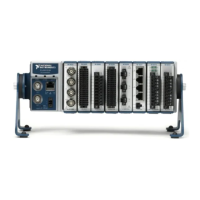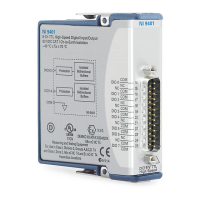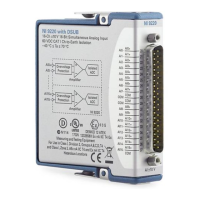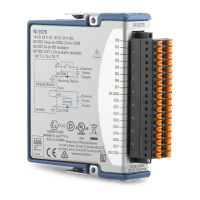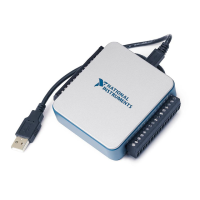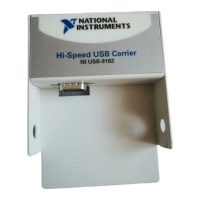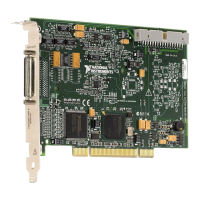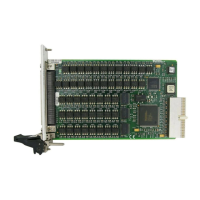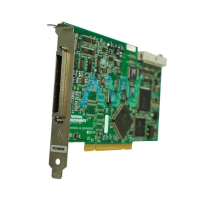Chapter 7 Counters
X Series User Manual 7-12 ni.com
Also, pulse measurements support sample clock timing while semi-period
measurements do not.
Semi-Period Measurement
In semi-period measurements, the counter measures a semi-period on its
Gate input signal after the counter is armed. A semi-period is the time
between any two consecutive edges on the Gate input.
You can route an internal or external periodic clock signal (with a known
period) to the Source input of the counter. The counter counts the number
of rising (or falling) edges occurring on the Source input between
two edges of the Gate signal.
You can calculate the semi-period of the Gate input by multiplying the
period of the Source signal by the number of edges returned by the counter.
Refer to the following sections for more information about X Series
semi-period measurement options:
• Single Semi-Period Measurement
• Implicit Buffered Semi-Period Measurement
Refer to the Pulse versus Semi-Period Measurements section for
information about the differences between semi-period measurement and
pulse measurement.
Single Semi-Period Measurement
Single semi-period measurement is equivalent to single pulse-width
measurement.
Implicit Buffered Semi-Period Measurement
In implicit buffered semi-period measurement, on each edge of the Gate
signal, the counter stores the count in the FIFO. A DMA controller transfers
the stored values to host memory.
The counter begins counting when it is armed. The arm usually occurs
between edges on the Gate input. You can select whether to read the first
active low or active high semi period using the CI.SemiPeriod.StartingEdge
property in NI-DAQmx.
Artisan Technology Group - Quality Instrumentation ... Guaranteed | (888) 88-SOURCE | www.artisantg.com
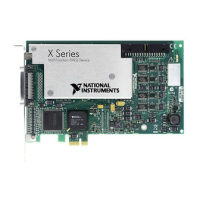
